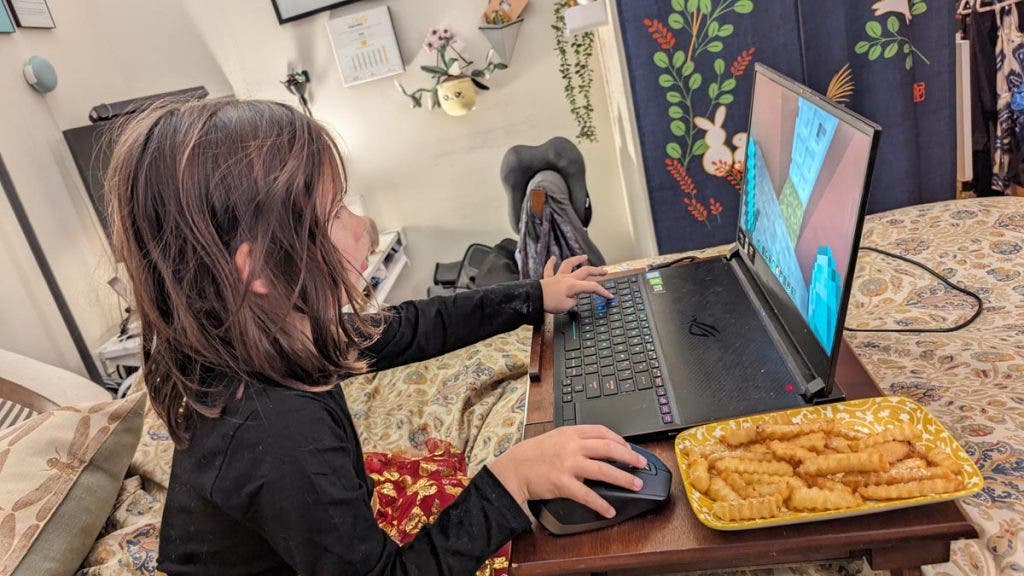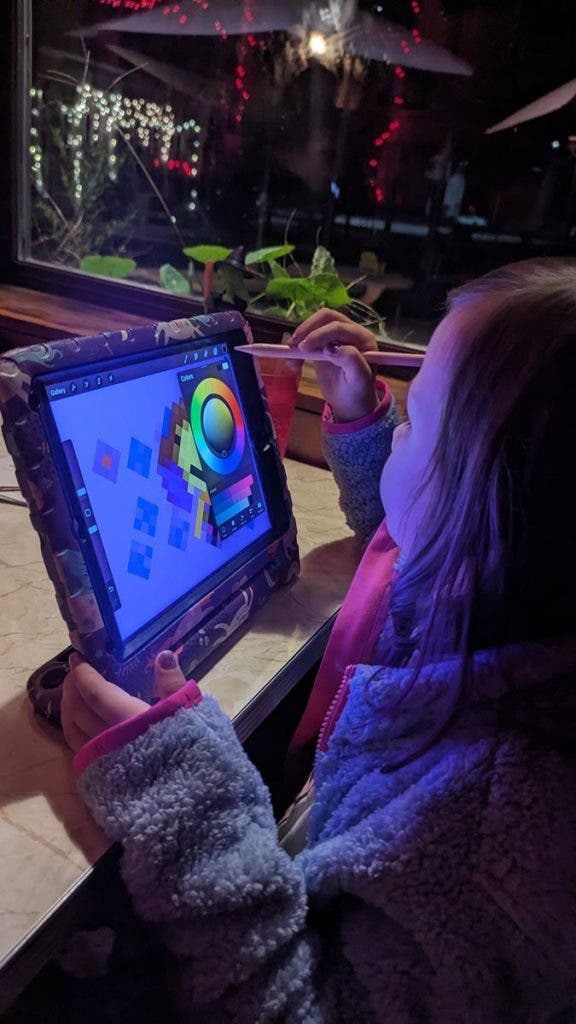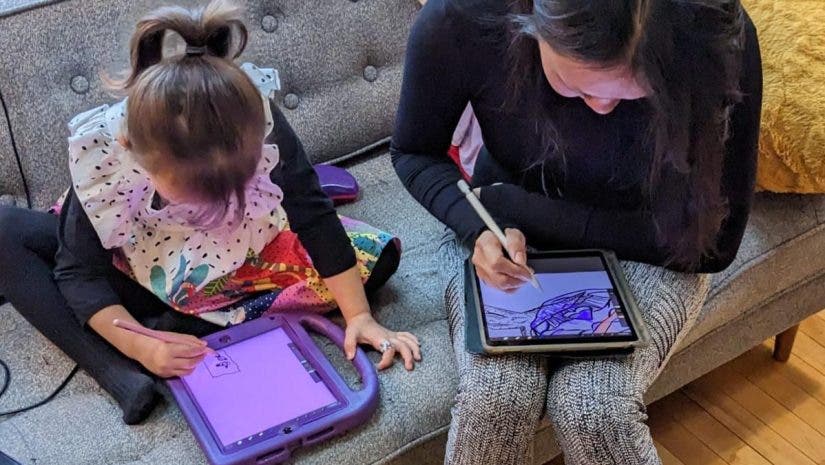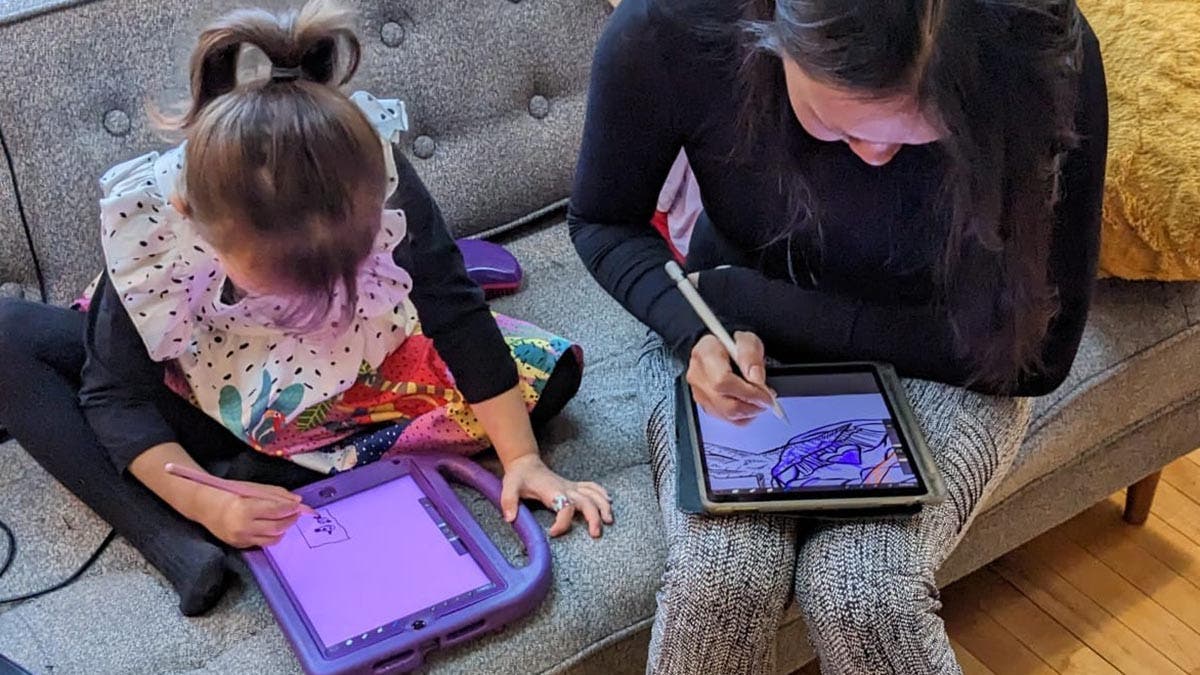Fostering creative kids is one of the most rewarding challenges for a parent or educator. With modern hardware like cameras, cell phones, tablets, and iPads, nurturing a child’s creative potential has become increasingly accessible…and mindful.
“But everyone says screen-time turns kids into mindless couch potatoes!”
Far from turning them into potatoes, modern technology offers tools that allow young minds to explore their creativity through drawing, photography, videography, and digital storytelling in ways that were unimaginable just a few decades ago. It creates fertile ground for off-the-cuff creativity to thrive.
Kids today have access to a new range of tools that can elevate their creative experience beyond crayons, fingerpaints, construction paper, etc. Those traditional analog tools certainly still have their place in the world (who doesn’t love a good coloring activity placemat at a restaurant?), but there’s a whole different avenue to explore in the digital realm. There are new skills to develop and new passions to be found.
GAMING AS CREATIVE EXPRESSION
Children are endlessly striving to understand and be understood. Young kids especially can struggle to articulate their feelings and needs, as they’re still learning the vocabulary to express themselves. Here, video games play a valuable role in motivating them to learn language skills through play.

As they grow older, kids can even start to design and develop their own games. Starting with simple platforms that teach basic programming principles like Scratch Jr. or Lego Education. Creative kids can then work their way all the way up to industry-standard engines like Unity, Godot, or Unreal.

The craft of game development is necessarily multi-disciplinary. It touches on programming, art, animation, music, audio design, marketing, business, finance, etc. And it all starts with early exposure to computers.
Kids can build characters that they identify with. Then, they can share emotions and thought processes through design and play style and learn teamwork and collaboration skills. Video games are a tremendous medium for creative expression.
IDEAS ON THE TABLE…WITHOUT MESSING UP THE TABLE
Children are natural, instinctual creators. They are fearlessly curious, constantly trying new things unfettered by the ingrained, deep-seated norms we develop as we get older. By introducing them to technology that allows for artistic exploration, caretakers can nurture that natural curiosity. The instantaneousness and flexibility of digital tools can help capture those early sparks of ideas. Thus, setting up a foundation to push their creative boundaries.
With tablets becoming household items, the barrier to creative expression has been lowered significantly. Kids no longer need to worry about limited supplies and mistakes they can’t erase. (And parents don’t need to worry about a mess to clean up after.) A simple click of a button or swipe on a screen can undo an error. This gives them the security to do what they do best—experiment.
Create Anywhere (No Matter What)
One of the greatest advancements for young artists is the accessibility of digital drawing tools. Devices like the iPad, combined with apps like Procreate and styluses like the Apple Pencil, are game changers. These tools enable children to explore their artistic abilities in a flexible, intuitive environment. The process of creating art digitally also teaches children about layering, color theory, and brush techniques without the mess or expense of traditional art supplies.

The beauty of these digital tools lies in their adaptability. Young artists can experiment with different brushes, textures, and effects with just a few taps. They can create layers, blend colors, and make adjustments without the frustration of starting over from scratch. This allows them to spend more time focusing on the creative process rather than worrying about perfection.
For instance, a child can open up Procreate, choose a brush, and begin sketching a new character. They might not be satisfied with the initial sketch, but that’s okay—they can simply undo the last stroke or create a new layer to refine their drawing. The learning curve is minimal, and the ability to experiment freely helps children build creative resilience. Over time, they can learn advanced techniques such as shading, texture or pattern creation, masking, and filtering, developing skills that can translate into professional-level artistry.
CAMERAS AND STORYTELLING
Photography and videography are other mediums through which children can explore their creativity. With modern cell phones and digital cameras, it’s easier than ever to introduce them to this art form. Most smartphones today come equipped with high-quality cameras, and many kids already have access to these devices. By encouraging them to use their phones or cameras to capture moments and share their viewpoints visually, we provide an avenue for creative expression and storytelling.
One way to guide children in photography is through prompts. You might ask them to document a day in the life of their favorite toy, or go on a scavenger hunt to capture specific items on film. These activities help them see the world from a new perspective and start to communicate ideas about composition, light, and color.

Photography and videography are gateways to digital storytelling. Children can compile their photos into stories using free apps like iMovie to create simple stop-motion animations or videos. Children can record videos, edit them, and add special effects with just an iPad or cell phone. They can even include voice-overs or music to enhance their storytelling.
The process of creating a film or taking a series of photos teaches kids about communication, planning, and the importance of attention to detail. They learn how to adopt visuals as another language to convey their ideas and emotions, giving them a new outlet for self-expression.
BUILD A CREATIVE VILLAGE
While technology provides exciting tools for fostering creativity, it’s essential to maintain a balance. Encourage children to see technology as a means to enhance their creativity rather than a replacement for traditional forms of expression or other activities. Allow them to use these tools as part of a broader toolbox that includes analog drawing, writing, building, and playing outdoors.
Create an environment where exploration and experimentation are encouraged. Provide children with access to a range of materials—both digital and traditional—and give them the time and space to create. Help them see the possibilities by engaging with them throughout the process. Ask them questions about their creations, encourage them to explain their choices, and offer praise for their efforts rather than focusing on the final result.
Finally, model creative behavior. If children see the adults in their lives using digital tools in creative pursuits, they’ll be more likely to explore those avenues themselves instead of just watching endless Cocomelon videos. Whether creating your own art or working on a project together, sharing in the creative process can inspire children and show them the joy that comes from creating.
CONCLUSION
The ubiquitousness of modern hardware like iPads, cameras, and smartphones has opened up incredible opportunities for children to expand their creative spheres. Whether through digital illustration, game design, or photo/videography, these tools allow children to experiment, learn, and express themselves in new, exciting, and educational ways. By encouraging the use of these technologies, caretakers can help foster a life-long love of creativity, giving children the skills and confidence they need to thrive in a rapidly evolving digital world.






